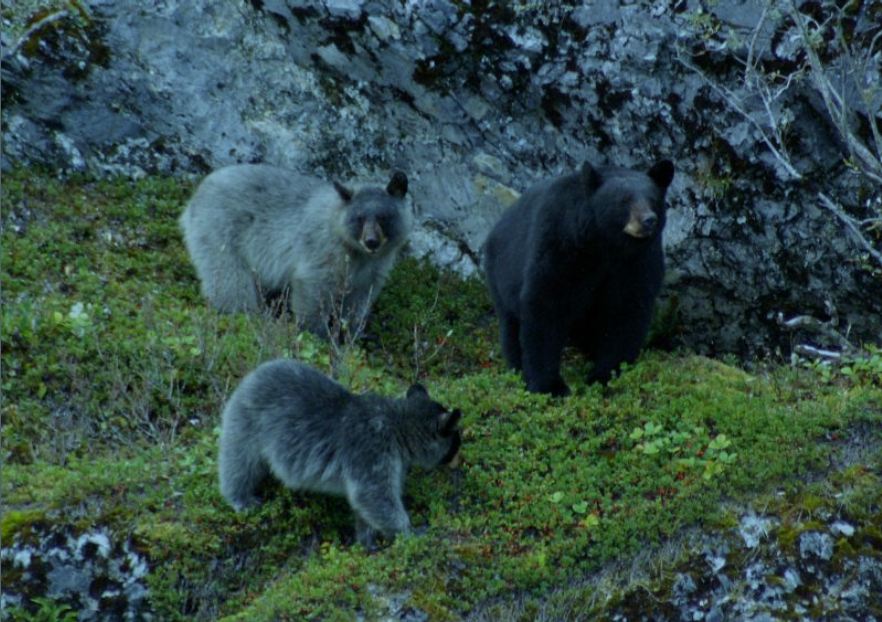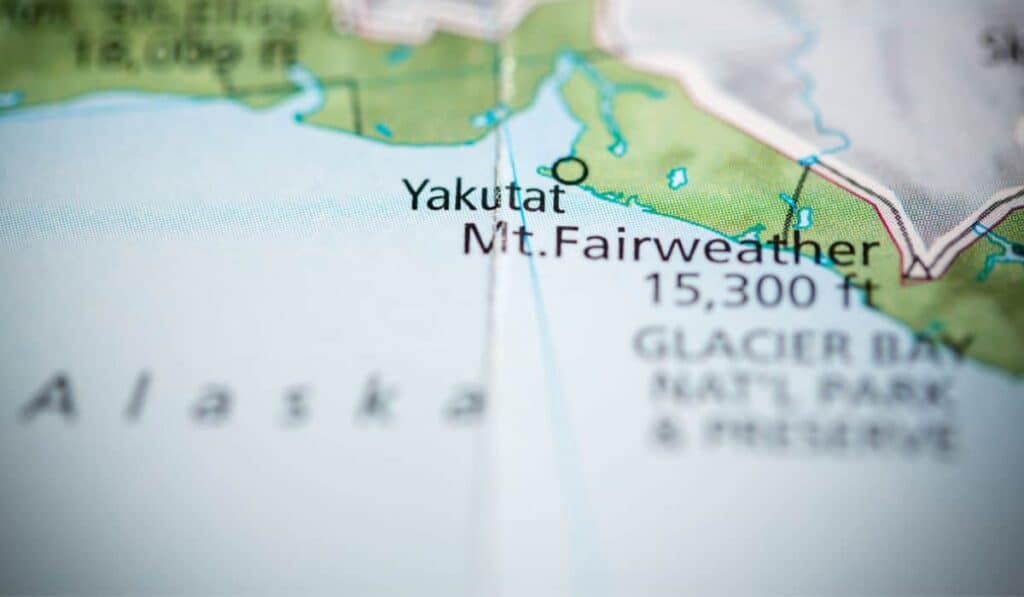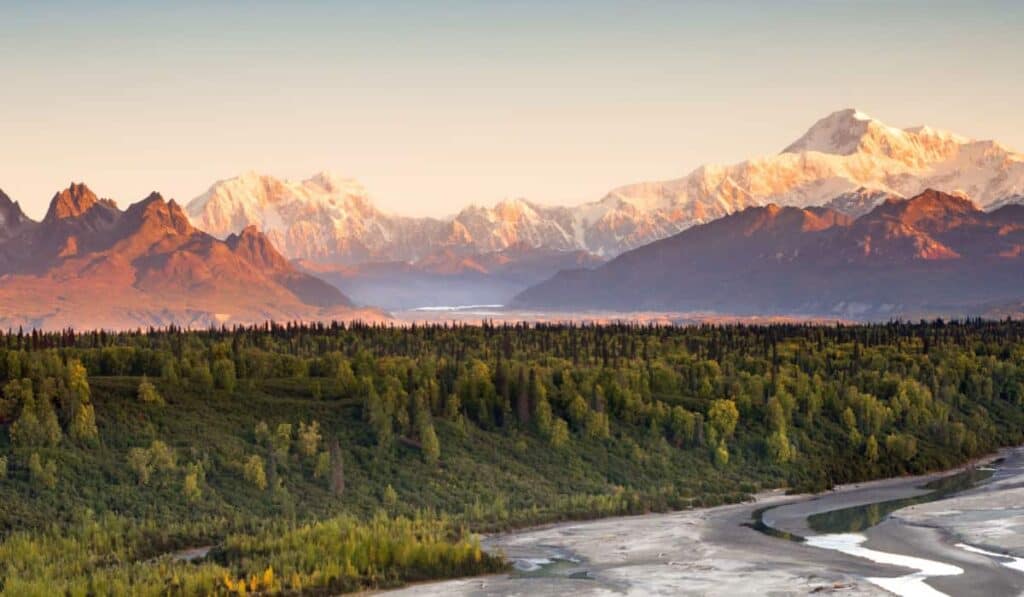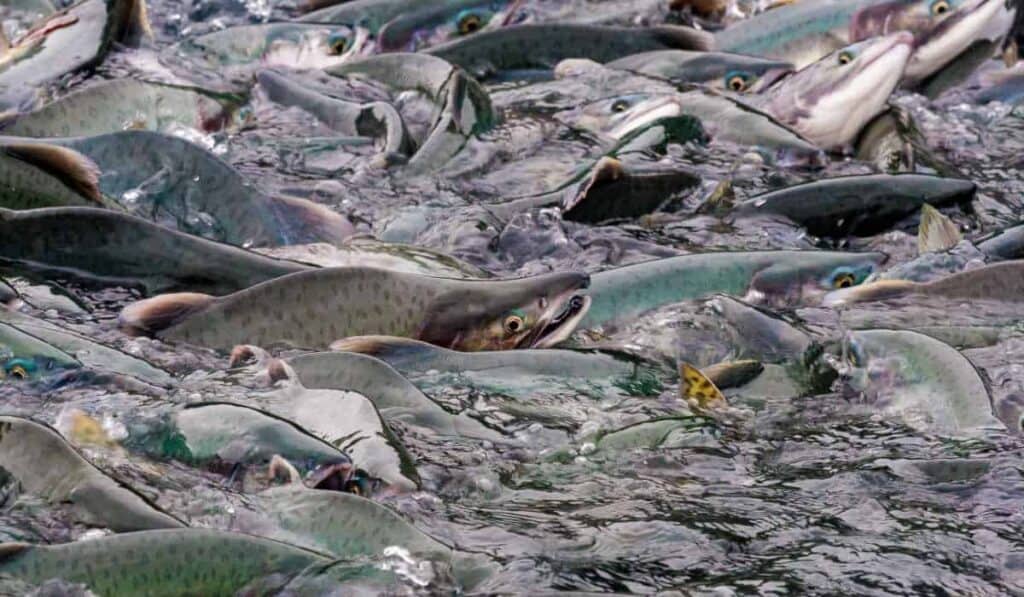Two of my nieces and I went out to the Mendenhall Glacier last week and, on our way out to the waterfall, the older one asked me what color bears are.
I told her that there are brown bears (which are often called “grizzlies”), black bears, and polar bears, which are usually white. She points about 50 feet down the trail and says, “Then why is that one blue?”
First, that’s an amazingly calm reaction to seeing your first bear in the wild. I know people in their 30s who aren’t that calm when they see a bear out on the trail.
As soon as we made it back to the car and were on the drive home, I was able to explain to them a little bit about what we all might have just seen. Do you know about Alaska’s blue glacier bears?
What is a Glacier Bear?
Glacier bears, also known as blue bears, blue glacier bears, or by their scientific name, Ursus americanus emmonsii, are a rare type of bear that is found only in Southeast Alaska, parts of the Yukon Territory, and British Columbia.

Specifically, on the Alaska side, they’re found between Cross Sound near Sitka and Glacier Bay National Park, although there have been scattered sightings in other places.
To tell you the truth, I don’t even know that I saw one that day with my nieces. Most people live their entire lives in Southeast Alaska and might never encounter one unless they’re hunters specifically searching for them.
The Tlingit people, who have lived in the area for thousands of years, call them “sik noon,” which roughly translates as “disappearing bear” because of their ability to blend in with the snow, due to their silver-blue or grey fur.
They are considered by members of the scientific community to be a subset of black bears, as they have similar behaviors, diets, and sizes.
Why Are Glacier Bears Blue?
No one really knows, as not a lot of research into the bears has been done at this time, although there are three popular theories as to their origins.
Some biologists believe that it’s a result of interbreeding between black bears and brown bears, also known as grizzlies, in a similar way to a mule being the offspring of a horse and a donkey.
Others believe that it’s an evolutionary trait and their fur changed color to blend in with snow and ice, which would help them avoid predators like grizzlies, hunters, and wolves.
The third group believes that it could be the result of genetic drift with no inherent camouflage reasons behind it. Glacier bears don’t tend to breed with non-glacier bears, so a recessive gene or set of genes being passed down could be responsible.
It is also interesting to note that blue cubs have been photographed walking alongside their parents who were regular black bears.
How Many Glacier Bears Are There?
The exact population of glacier bears is unknown because they tend to live in mountainous regions and they blend in with snow and ice. The only estimate is the number of bears reported as killed by hunters, who have long sought the bears for their rare fur.
According to Alaska’s Department of Fish and Game, 0.4% of all bears killed lawfully by hunters in Alaska are of the glacier variety.
It has been estimated that there are about 135,000 bears in Alaska, with 100,000 black bears, 30,000 grizzlies, and 5,000 or so polar bears. If we assume that 0.4% of the bear population in Alaska are glacier bears, that would give us about 540 bears.
There is no official data or even an estimate, this doesn’t count the Canadian side, and there’s no way of knowing what the actual percentage is, but this is just a rough guess to illustrate how rare they are.
Are Glacier Bears Endangered?
They are not “endangered” in the sense that they are not on any of the major Endangered Species Lists. However, there is cause for concern with regard to the future of these rare creatures.
They are listed as “vulnerable” by some sources, such as NatureServe, which places them in the “threatened” category, although it is the lowest level within that range.
First, as I mentioned earlier, they’re highly valued by hunters for their fur and if the number of bears taken by hunters exceeds their rate of reproduction, they could eventually go extinct.
The other issue is the increase in temperature that is causing a lot of the area’s ice fields to melt. If their natural habitat is destroyed, they would likely migrate to another ice field.
During a potential migration, they would face different predators than the ones they’re used to and there would also be an increased chance for interbreeding, which could cause their unique genetic trait to be wiped out.
One of the other unique things about them is that, unlike other bears, they don’t tend to wander far from home. They like to live in more rugged areas and don’t often venture to or through nearby places with smoother terrain. Simply put, they like being near ice.
Conclusion
The blue glacier bear is one of the rarest types of bear on the planet, although they are technically classified as a subspecies of black bears. They are only found in parts of Southeast Alaska, and the icy coastal regions of the Yukon and British Columbia in Canada.
Although much about them is unknown, we do know that they are a small population (although no one knows how small) that is threatened by Alaska’s dissolving ice fields and the possibility that their rare genetic makeup could be erased from the gene pool.
It is not guaranteed by any means and it’s possible to visit Glacier National Park near Gustavus and not see one at all, but for visitors to Alaska, the park offers the best chance to glimpse one of these rare creatures.
If you get the chance, it is definitely worth taking a tour to get even the smallest chance at seeing one of these animals, just in case nature eventually takes its course with the entire population.
Whether you come here hoping to catch a glimpse of the bears or just to enjoy the rest of our state’s natural beauty, Southeast Alaska can’t wait to welcome you on your next exciting cruise or independent adventure!







